Marigolds are some of the most cheerful, easy-to-grow, and versatile flowering plants that brighten up gardens, patios, and walkways around the world. Loved for their vibrant hues of yellow, orange, red, and gold, these hardy plants thrive in sunny conditions and are prized for their long blooming season and natural pest-repelling properties.
Though marigolds are often labeled as “low-maintenance,” like all plants, they require a proper watering routine to stay healthy and bloom prolifically. Both overwatering and underwatering can lead to poor plant health, stunted growth, and diminished flowers. So, how often should you water a marigold? In this detailed guide, we’ll explore the ideal watering schedule for marigolds, factors that influence watering needs, signs of water stress, and expert tips for keeping your marigolds lush and blooming.
Understanding Marigold Watering Needs
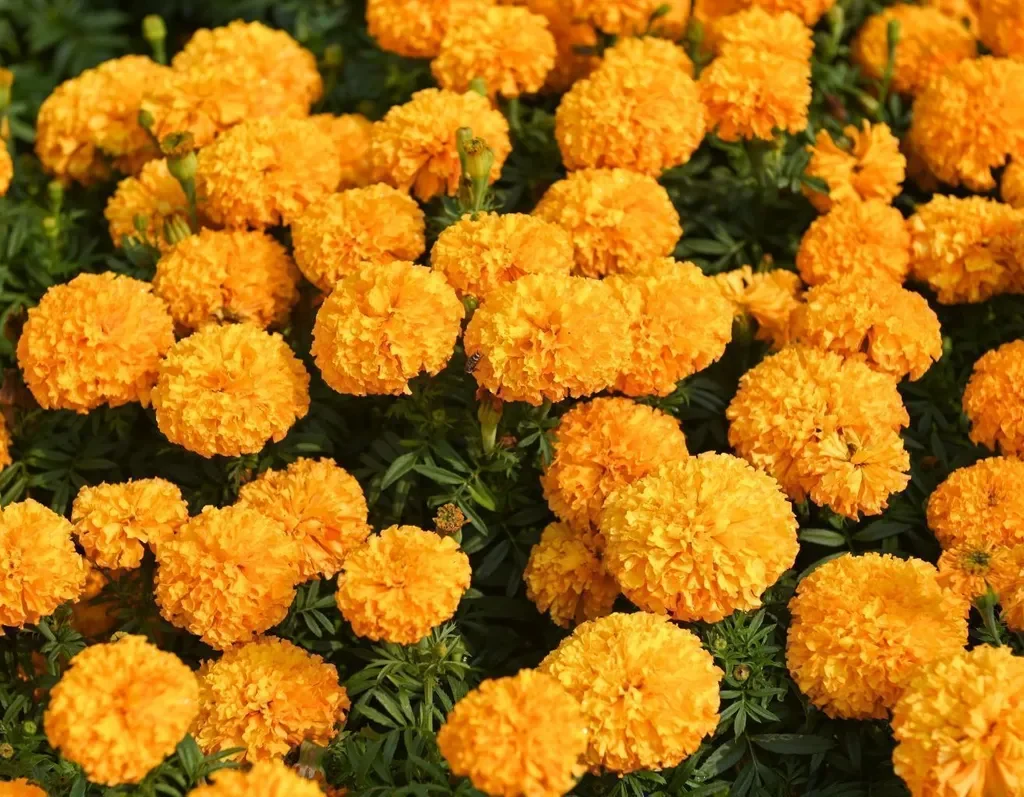
Marigolds are native to Mexico and Central America, where they grow in warm, sunny, and relatively dry conditions. This heritage has made them tolerant of heat and drought, preferring moderately moist but well-drained soil. In most cases, marigolds would rather be a little dry than overly wet.
The frequency of watering depends on several factors:
- Plant type (African marigolds, French marigolds, or signet marigolds)
- Growth stage (seedling, mature plant, flowering)
- Location (in-ground garden beds, containers, or hanging baskets)
- Season and local climate conditions
How Often Should You Water a Marigold?
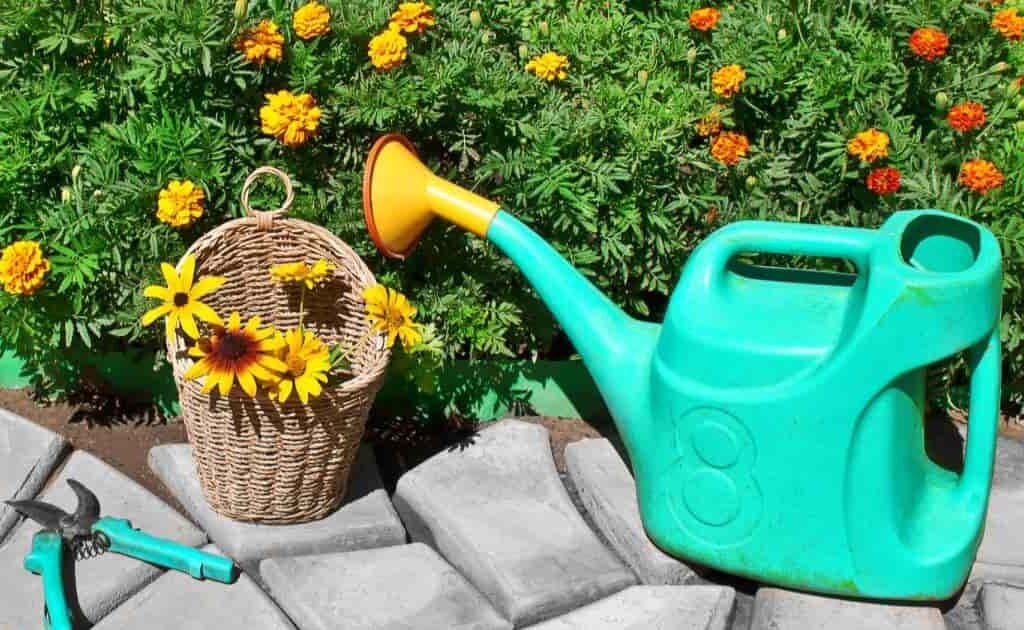
General Watering Guidelines:
- Outdoor In-Ground Marigolds: Water every 2–3 days during hot, dry weather. Reduce frequency to once or twice a week during cooler, wetter seasons.
- Outdoor Potted Marigolds: Water every 1–2 days in summer. Containers dry out much faster than garden soil.
- Indoor Marigolds: Water once a week or when the top inch of soil feels dry.
Pro Tip: Always check soil moisture before watering. Marigolds hate soggy roots and thrive in well-drained conditions.
Seasonal Watering Schedule for Marigolds
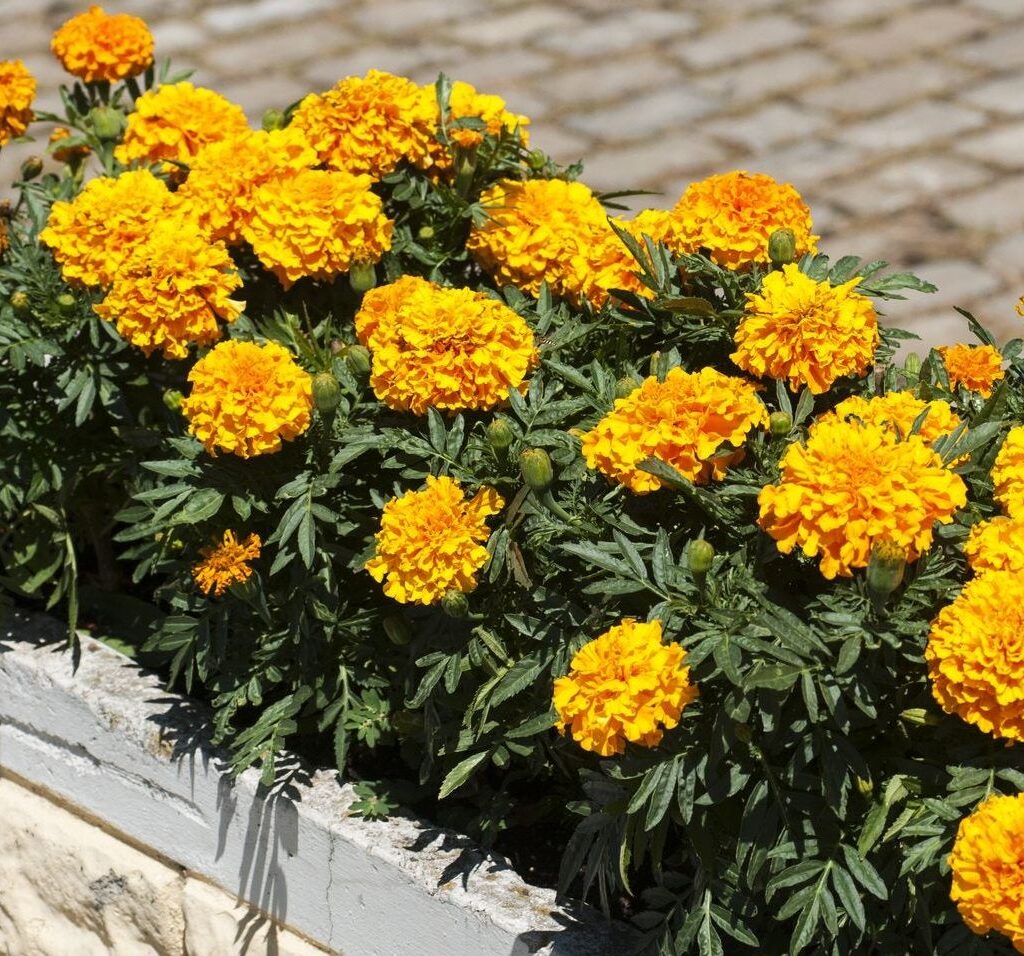
Spring and Summer (Active Growth & Blooming)
This is the peak growing season when marigolds need consistent moisture to support vigorous growth and continuous blooming.
- Frequency: Every 2–3 days for garden marigolds; every 1–2 days for potted marigolds in warm, dry weather.
- Method: Water deeply and let soil dry slightly between waterings.
Autumn (Cooling Temperatures)
As temperatures drop, growth slows, and water needs decrease.
- Frequency: Every 4–5 days for in-ground plants.
- Container plants: Every 2–3 days, depending on soil dryness.
Winter (Dormancy or Indoor Growth)
In frost-prone areas, marigolds are annuals and won’t survive outdoors in winter. Potted marigolds kept indoors will need much less water.
- Frequency: Water every 7–10 days or when soil feels dry.
Proper Watering Techniques for Marigolds
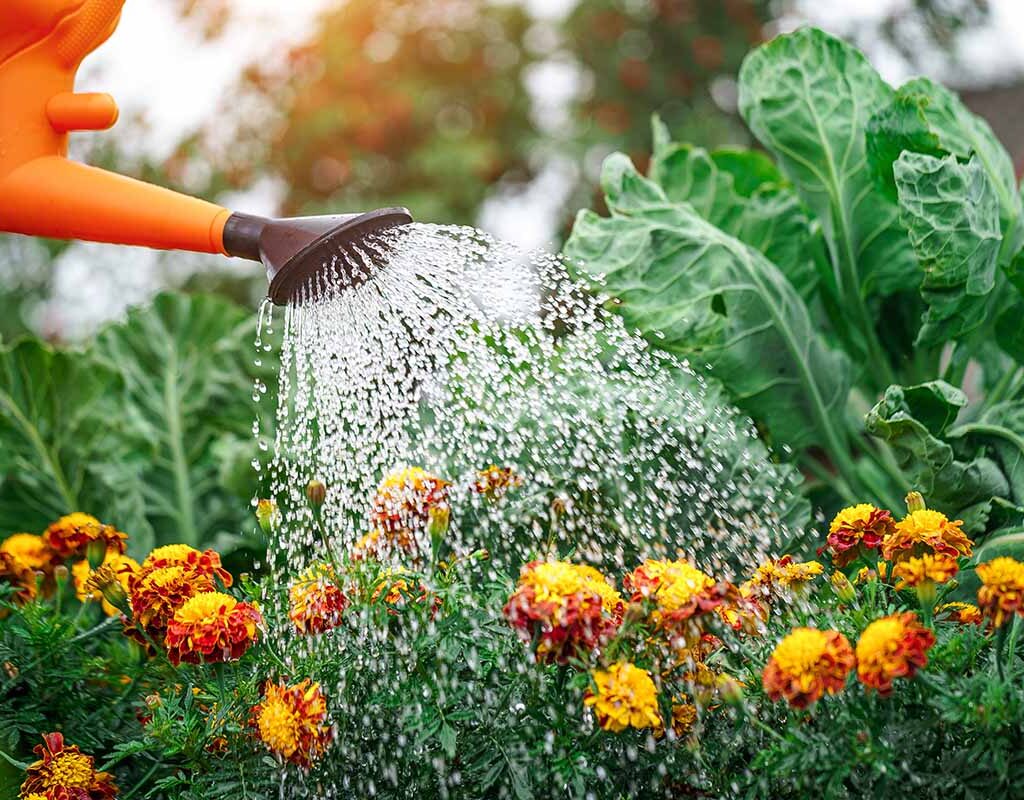
Watering marigolds isn’t just about frequency — how you water them matters too. Follow these best practices:
Water at the Base
Avoid wetting the foliage, as moist leaves can lead to fungal problems like powdery mildew. Water directly at soil level.
Water Deeply
Ensure water reaches the root zone. A deep soak every few days is better than shallow daily sprinkles.
Use Room-Temperature Water
Cold water can shock plant roots, while tepid water is gentler and absorbed more efficiently.
Water Early in the Day
Morning watering gives plants time to absorb moisture before the afternoon heat and reduces overnight humidity, which can attract pests and diseases.
Check Soil Before Watering
Stick your finger about an inch into the soil. If it’s dry, water. If it’s still moist, wait a day.
Factors That Affect Marigold Watering Frequency
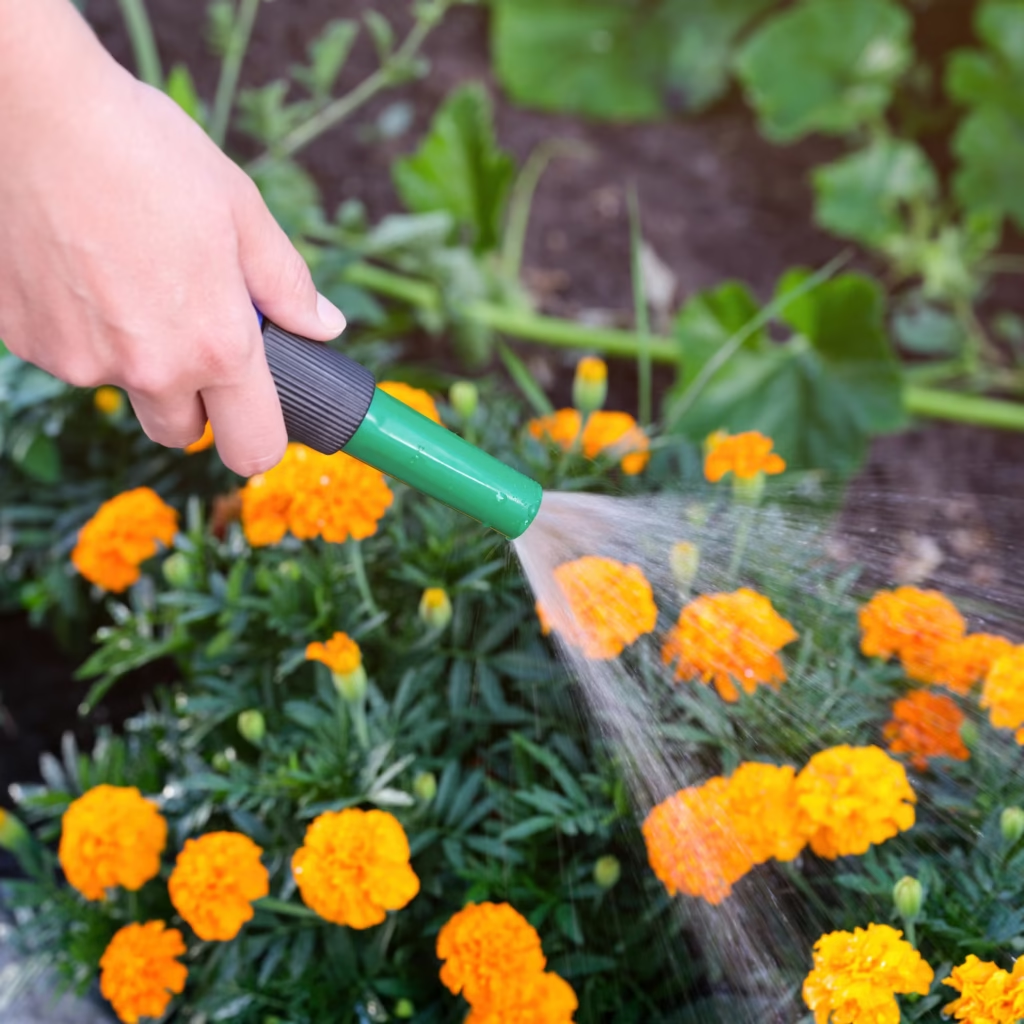
Several environmental and situational factors influence how often marigolds need watering:
Soil Type
- Sandy soil: Drains quickly and requires more frequent watering.
- Loamy soil: Holds moisture while providing good drainage — ideal for marigolds.
- Clay soil: Retains water longer and should be amended with compost or sand to improve drainage.
Planting Location
- Garden beds: Hold moisture better than pots and require less frequent watering.
- Containers: Dry out faster, especially in the sun or windy conditions.
Temperature and Humidity
Hot, dry weather increases evaporation, requiring more frequent watering. Cool, humid conditions slow down soil drying.
Mulching
A light layer of organic mulch (like straw or shredded bark) around in-ground marigolds helps retain soil moisture and suppress weeds.
Signs of Overwatering and Underwatering in Marigolds
Knowing how to spot the symptoms of water stress can save your marigolds from permanent damage.
Signs of Overwatering:
- Yellowing, limp leaves
- Wilting despite wet soil
- Root rot (foul odor and mushy roots)
- Mold or fungus on the soil surface
Signs of Underwatering:
- Drooping, dry leaves
- Crispy or brown leaf edges
- Flower buds dropping before opening
- Soil pulling away from the container’s edges
Action Tip: Always adjust your watering schedule if you notice any of these warning signs.
Special Watering Tips for Potted Marigolds
Potted marigolds need extra attention because pots dry out much faster than garden soil.
- Use well-draining potting mix and containers with drainage holes.
- Elevate pots slightly off the ground to allow excess water to drain.
- In hot weather, pots may need daily watering.
- Avoid leaving pots sitting in saucers of water.
Additional Marigold Care Tips
For best results, combine smart watering habits with general care practices:
Deadhead Regularly
Remove spent blooms to encourage continuous flowering.
Provide Full Sun
Marigolds thrive in at least 6–8 hours of direct sunlight daily.
Feed Moderately
Too much fertilizer, especially nitrogen-heavy formulas, can cause lush foliage with fewer flowers. A balanced liquid fertilizer every 4–6 weeks is ideal.
Watch for Pests
Marigolds are natural pest deterrents but occasionally attract spider mites or aphids. Use insecticidal soap or neem oil if needed.
Conclusion
So, how often should you water a marigold?
The short answer:
- In the heat of summer: Every 2–3 days for garden marigolds; daily or every other day for potted ones.
- In cooler, wetter seasons: Once every 4–7 days depending on soil moisture.
- In winter (indoors): Every 7–10 days.
The key is to water deeply and let the soil dry slightly between waterings. Marigolds prefer moderately moist, well-draining soil and are far more tolerant of dry conditions than soggy roots.
By understanding your environment, checking soil moisture, and watching for signs of water stress, you can keep your marigolds blooming beautifully and healthily from spring through autumn.





Leave A Comment